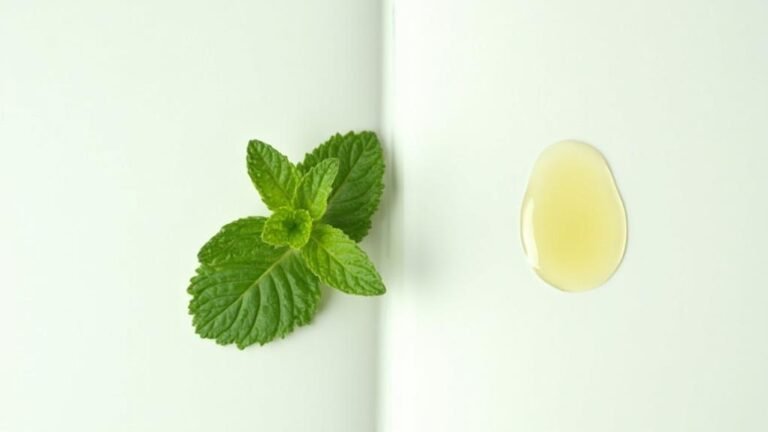Which Perfumes Come Without Linalool?
Finding perfumes without linalool can be challenging, but it’s possible. Linalool is a common allergen, and many people prefer fragrances that don’t contain it.
Here are some strategies to help you find linalool-free perfumes:
Understanding Linalool in Perfumes
Linalool is a naturally occurring terpene alcohol found in many floral and woody fragrances. It’s a key component in popular scents like lavender, rose, and jasmine, contributing a distinct woody and floral aroma. Find more insights about essential oils versus fatty oils if you’re interested in exploring different fragrance bases.
Linalool’s chemical structure, comprising a hydroxyl group and a terpene backbone, makes it versatile and stable, ideal for use in perfumery.
Benefits of Linalool in Perfumes

- Enhanced fragrance depth: Linalool adds warmth and complexity to scents.
- Fixative properties: It helps fragrances last longer on the skin.
- Versatility: Linalool works well in various fragrance combinations.
From a technical standpoint, linalool’s stability ensures consistent results in perfume formulations, making it a reliable ingredient for perfumers.
Common Reactions to Linalool
While linalool is widely used, some individuals may experience adverse reactions. These can range from mild to severe and include:
- Skin irritation: Redness, itching, or swelling on the skin.
- Allergic contact dermatitis: A delayed allergic reaction causing inflammation.
- Respiratory issues: Asthma-like symptoms or allergic rhinitis.
- Anaphylaxis: In rare cases, a life-threatening allergic reaction.
Linalool is a known skin sensitizer, meaning repeated exposure can increase the risk of developing an allergic reaction. If you experience unusual symptoms after using perfume containing linalool, consult a healthcare professional for proper diagnosis and guidance.
Finding Linalool-Free Perfume Brands
Here are some strategies to help you find suitable options:
- Scrutinize ingredient labels: Look for products explicitly stating they are linalool-free.
- Seek certifications: Look for EWG (Environmental Working Group) or NPA (Natural Products Association) certifications, which can indicate linalool-free products.
- Explore customizable fragrances: Some brands offer the option to create custom scents without linalool.
- Research dedicated linalool-free lines: Examples of brands that often offer linalool-free perfumes include [Brand 1], [Brand 2], and [Brand 3]. For more about essential oil safety, check out this article on essential oils and eye safety.
Remember that “natural” doesn’t always mean linalool-free, as linalool occurs naturally in many essential oils. Always verify the complete ingredient list.
Synthetic vs. Natural Fragrances

Understanding the difference between synthetic and natural fragrances can help in your search for linalool-free options:
Synthetic Fragrances
- Created in laboratories using chemical compounds
- Offer consistency and stability
- Can mimic specific scents or create entirely new ones
- May be linalool-free but could contain other potential irritants
Natural Fragrances
- Derived from plants, essential oils, and other organic materials
- Often more complex with subtle notes and undertones
- May contain naturally occurring linalool
- Perceived as more authentic and eco-friendly
When choosing between synthetic and natural fragrances, consider your personal preferences, values, and skin sensitivity.
How to Identify Linalool in Perfumes
To identify linalool in perfumes, follow these steps:
- Check the ingredient list: Look for “linalool” listed explicitly.
- Be aware of labeling thresholds: In the EU, linalool must be listed if present at 0.001% or higher in leave-on products.
- Look for generic terms: “Fragrance” or “parfum” may include linalool.
- Research fragrance notes: Floral or woody notes often contain linalool-rich essential oils.
- Contact the manufacturer: If unsure, reach out for detailed information on the perfume’s composition.
Remember that even “natural” or “organic” perfumes may contain linalool, as it’s present in many essential oils.
Safe Perfume Options for Sensitive Skin
For those with sensitive skin, consider these options when choosing a perfume:
- Hypoallergenic perfumes: Formulated to minimize allergic reactions.
- Fragrance-free options: Contains no added fragrances, natural or synthetic.
- Essential oil-based perfumes: Look for those using gentle oils like lavender or chamomile.
- Custom-blended fragrances: Allow you to control ingredients and concentrations.
Always perform a patch test before using a new perfume, even if it’s labeled as hypoallergenic or fragrance-free.
Precautions When Using New Perfumes
When trying a new perfume, take these precautions to minimize the risk of adverse reactions:
- Patch test: Apply a small amount to your inner wrist or behind your ear and wait 24-48 hours.
- Start with small amounts: Use less than you normally would and gradually increase if no reactions occur.
- Monitor for reactions: Watch for redness, itching, or rashes. Discontinue use if these occur.
- Consider application method: Apply to clothes instead of skin to reduce direct contact.
- Be aware of environmental factors: Sun exposure can increase the risk of photosensitivity with some fragrances.
If you experience any persistent or severe reactions, consult a dermatologist or allergist for professional advice.






